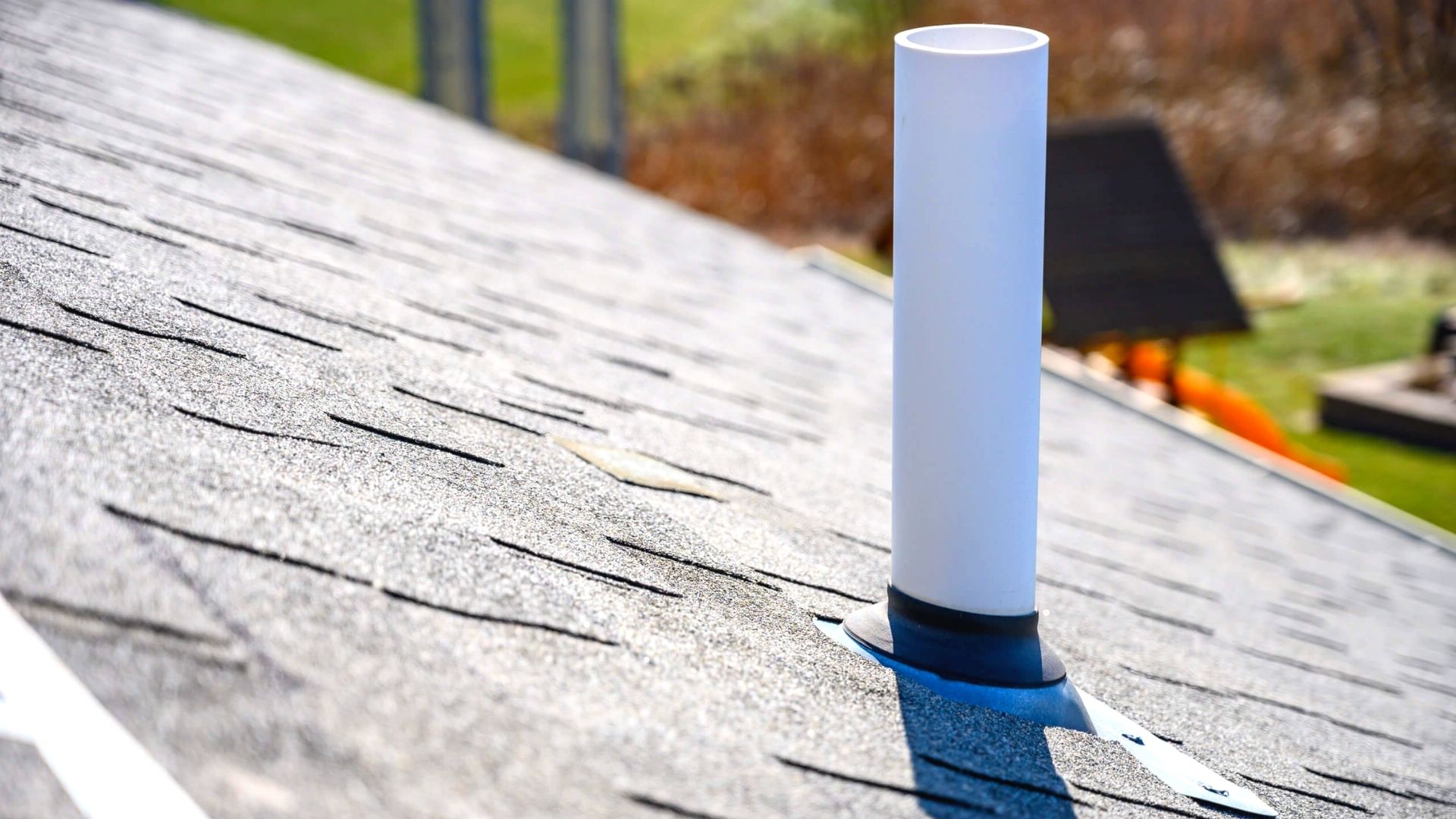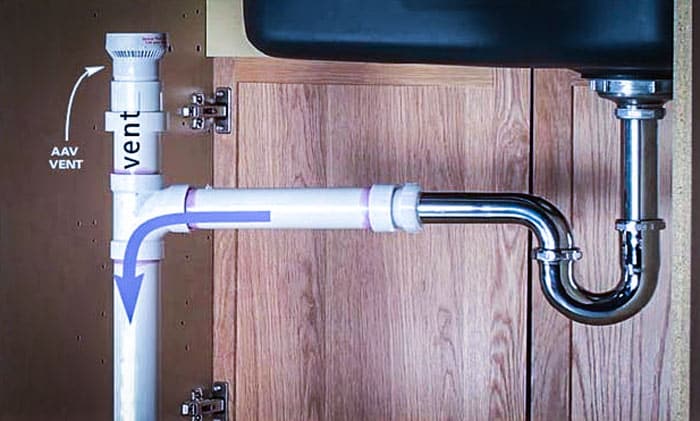The Essential Role of Correct Ventilation in Plumbing Systems
The Essential Role of Correct Ventilation in Plumbing Systems
Blog Article
Right here on the next paragraphs you can locate lots of first-rate information related to Why Plumbing Air Vents Are Important.

Proper air flow in plumbing systems is often overlooked, yet it is essential for maintaining the functionality and safety of your home's plumbing. Ventilation helps manage atmospheric pressure, stop the build-up of damaging gases, and guarantee the reliable removal of waste. In this overview, we will certainly explore the value of proper pipes ventilation, exactly how it works, and the benefits it gives your pipes system.
Recognizing Air Flow in Plumbing
Air flow in pipes refers to the network of pipelines that permit air to move via the drain system. These vents serve several purposes, consisting of managing air pressure within the pipes, preventing drain gases from getting in the home, and assisting in the smooth flow of wastewater.
Just How Air Flow Works in Pipes Solutions
Air Pressure Guideline
Correct ventilation maintains balanced air pressure within the pipes system. When water moves through pipes, it displaces air. Without adequate ventilation, this displacement can create adverse pressure, bring about slow down drains pipes or siphoning of water from traps, which can cause unpleasant smells to leak right into the home.
Avoiding Drain Gas Build-up
Among one of the most critical functions of plumbing vents is to stop sewage system gases, such as methane and hydrogen sulfide, from accumulating within the home. These gases can position serious wellness threats and are highly flammable. Vent pipelines permit these gases to leave securely outdoors.
Assisting in Waste Elimination
Air flow assists in the efficient removal of wastewater by preventing airlocks in the water drainage system. When air can stream freely via the vents, it allows water and waste to flow smoothly via the pipes, reducing the risk of blockages and backups.
Types of Pipes Vents
Main Stack Vent
The primary pile air vent, additionally called the vent stack, is the primary vent in a plumbing system. It prolongs from the primary drainpipe align through the roofing, enabling gases to get away and fresh air to get in the system.
Branch Vent
Branch vents link to the primary stack vent and offer private components, such as sinks, bathrooms, and showers. These vents make sure that each fixture has adequate ventilation to work appropriately.
Air Admittance Valve (AAV).
An Air Admission Valve (AAV) is a one-way shutoff that permits air to get in the pipes system without the need for a traditional vent pipeline prolonging with the roofing system. AAVs are generally used in improvements or areas where setting up a basic vent is not practical.
Signs of Poor Air Flow in Plumbing.
Slow Draining Fixtures.
If your sinks, tubs, or commodes are draining slowly, maybe an indicator of bad ventilation. Poor air circulation can produce a vacuum cleaner effect, making it tough for water to drain pipes effectively.
Gurgling Sounds.
Gurgling noises originating from drains pipes are typically an outcome of air being sucked through water traps as a result of unfavorable pressure in the pipelines. This is a clear sign of not enough air flow.
Undesirable Smells.
Drain smells inside your home are a warning that your plumbing system is not properly aerated. This might indicate that sewer gases are not being effectively aired vent outside, bring about potentially unsafe problems.
Typical Air Flow Blunders.
Poor Vent Sizing.
Making use of small vent pipes can bring about poor air circulation and stress imbalances in the system. It's vital to make use of vents that fulfill the certain requirements of your plumbing system.
Improper Vent Positioning.
Positioning vents too much from the components they serve can reduce their efficiency. Proper placement ensures that air can flow easily and successfully through the system.
Ignoring Code Needs.
Building ordinance offer specific guidelines for plumbing ventilation. Overlooking these codes can result in a system that stops working to operate correctly and may bring about pricey repair work or health hazards.
Benefits of Correct Ventilation.
Boosted System Effectiveness.
Properly ventilated pipes systems operate extra effectively, with fewer clogs, faster draining pipes, and less strain on the pipelines. This efficiency expands the lifespan of the plumbing system.
Improved Air High Quality.
By avoiding sewer gases from entering your home, correct ventilation contributes to far better interior air quality, making your living environment healthier and much more comfy.
Preventing Water Damages.
Adequate air flow assists stop water from being siphoned out of traps, which can lead to sewage system gases entering the home and triggering water damage over time.
Actions to Make Sure Appropriate Ventilation.
Consulting Plumbing Codes.
Constantly get in touch with regional pipes codes when developing or customizing your pipes system. These codes provide the required guidelines for proper airing vent and ensure your system fulfills security requirements.
Regular Assessment and Maintenance.
Normal inspections can aid identify prospective air flow issues prior to they come to be major troubles. Maintenance jobs, such as cleaning vent pipelines and looking for obstructions, are essential for keeping the system in good working order.
Specialist Installation.
For brand-new installations or major modifications, it's smart to employ an expert plumber. They have the expertise to make certain the air flow system is properly designed and mounted according to code.
Final thought.
Proper air flow is an important element of any kind of pipes system, making certain that it functions successfully and securely. By understanding the importance of ventilation, recognizing the signs of poor ventilation, and taking actions to preserve your system, you can avoid pricey concerns and shield your home's air quality.
4 Things You Should Know About Your Plumbing Vents
What Plumbing Vents Are
Also called a vent stack, a plumbing vent is a vertical pipe attached to your drain line that runs through your roof. The plumbing vent pipe, or plumbing air vent, removes gas and odors from your plumbing system and allows fresh air to enter the pipes, helping the water to flow out of the drain pipes.
What Plumbing Vents Do
Plumbing vents have two basic functions. One of which is to allow unpleasant smelling wastewater and sewer gasses to escape your plumbing system instead of entering your home. Plumbing vent pipes are typically located on roofs, away from windows, to ensure the fumes exit the home completely.
The other function of the plumbing vent is to move fresh air into your plumbing system. This helps move water through every plumbing fixture in your house, like toilets and sink drains. Think of the way in which you need to let a little air into the bottle as you pour soda in order to make the drink flow smoothly.
Different Types of Plumbing Vents
True vent: This is the most common vent option. In simplest terms, a true vent is a vertical pipe attached to your drain line that exits through the roof. They often function as the main vent that other fixtures can connect to. Re-vent pipe or auxiliary vent: Attached to the drain line near specific plumbing fixtures, re-vent pipes run up and over to connect to the main vent. Common vent: Two plumbing fixtures installed on opposite sides of a wall are typically tied into the vent stack using something known as a sanitary cross. Wet vent: This venting option operates as a drain pipe and a vent at the same time. Wet vent drainage systems drain water from one fixture while venting the air from another. Although they’ve been used for over 100 years, wet vent systems have only recently been added to the plumbing code in many areas. If you’re planning on installing one in a bathroom remodel, make sure you check your local code prior to construction. Loop vent: For free-standing fixtures like kitchen island sinks, loop vents are ideal. These vent pipes run under the floor, rise from the P-trap, and create a loop inside the cabinet sink. Air admittance valve: An AAV is a one-way mechanical valve typically installed at the site of the plumbing fixture. AAVs allow venting to occur without having to tie into a larger venting system. They’re ideal for venting fixtures where you aren’t able to easily connect to an existing vent system. Common Plumbing Vent Issues
Although vent pipes typically don’t have water flowing through them, they’re still subject to many typical plumbing issues. For example, clogs are one of the most common problems associated with sewer vent pipes. If your vent pipe gets clogged, all of your plumbing fixtures tied into the vent stack will be affected.
A sink with a slow drain that bubbles and gurgles or a strong sewage smell around your toilet are both indicators that your toilet vent pipe is clogged. Because most vent pipes exit through the roof, old leaves, twigs or even a bird’s nest could be clogging the pipe.
Clogs in your vent pipe system cause a buildup of negative pressure, meaning that water won’t be able to flow out of your home very well. It’s similar to putting your finger over the opening of a straw to trap water inside. When you remove your finger, the water is able to flow out of the straw.
If you suspect you have any blockage in your vent, make sure you have a professional come examine the situation. Left unchecked, a blocked air vent can lead to other costly repairs, like leaks and sediment buildup.
Under Pressure
Pipe vents are essential aspects of a home’s plumbing system. Owning a home means learning about all sorts of things you never put much thought into before. But by understanding as much as you can about the important systems of your home, you can keep those budgets intact and those anxiety levels low.
https://www.homeserve.com/en-us/blog/home-improvement/plumbing-vents/

We had been guided to that report on Essential Plumbing Vent Pipes: Understanding Their Role from someone on a different web blog. Please take the opportunity to share this content if you appreciated it. Thanks for being here. Kindly come visit our website back soon.
Top Article Report this page